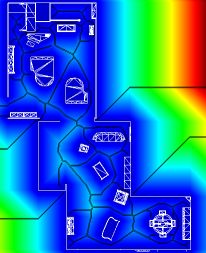Multiscale Shape and Field Processing


Shapes and fields come in many flavors: 2D images or contours, 3D surfaces or volumes, and can also carry data attributes, such as normals, textures, vectors, scalars, or tensors. Multiscale processing refers to a wide class of operations performed on such shapes or fields at different levels-of-detail. Such processing operations that I currently research are:
- feature-preserving smoothing: eliminating the small-scale details of a shape (e.g. noise) while keeping its sailent features (e.g. edges)
- shape classification: partitioning a shape into regions having different properties, e.g. corners, edges, convex, concave, and flat regions
- shape segmentation: decomposing a shape into regions perceived as its different parts, e.g. finding the limbs, torso and head of a human silhouette
- shape matching: given two or more shape, find their similar components
- shape simplification: given a shape, produce a simpler shape (e.g. less polygons) which looks similar
- simulation: given a physical phenomenon (e.g. fluid flow), simulate it efficiently and accurately
To address these goals, we use several classes of techniques:
- image-based techniques: represent, process, and interact with the data in terms of (continuous) images, thereby leveraging many existing image-processing techniques to assist complex data-centric tasks;
- skeletonization: compute the so-called skeleton, or medial axis, a thin structure centered within a 2D or 3D shape;
- partial differential equations: represent the shape/field modification as a differential operator, and the processing as the operator's application.
To learn more
Follow the links on the left side bar to specific projects.
